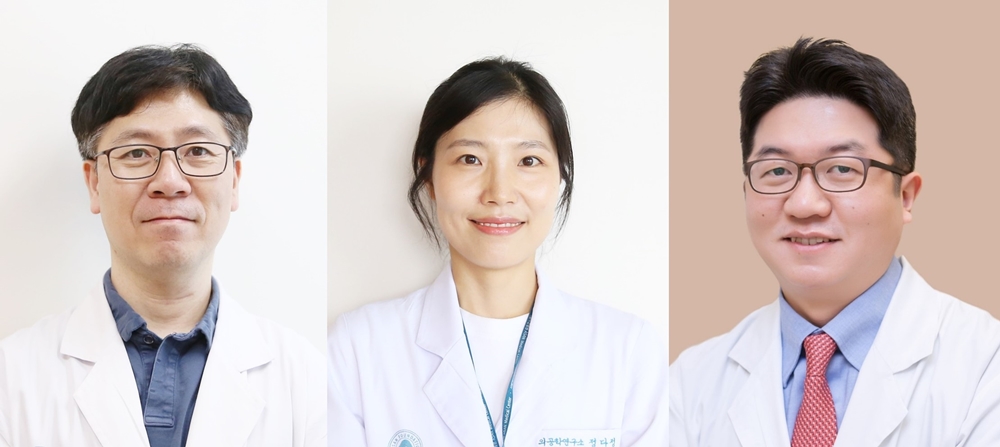-
- Global AMC MENU
- NEWS
- HEALTH
- PEOPLE
- Introduction

▲ (from the left) Professor Gi Seok Jeong and Dr. Da Jung Jung of the Biomedical Engineering Research Center and Professor Jong Woo Cho of the Department of Plastic Surgery
Researchers at Asan Medical Center have developed the world’s first angiosarcoma derived-organoid model. Organoids, cancer tissue-like structures generated by harvesting cancer tissue from patients, have recently become a pivotal foundation for the development of personalized anticancer drugs and diagnostic markers. While patient-derived cancer organoids have been confirmed to form from various cancer tissues, a culturing method for sarcoma-derived organoids has not been reported in the academic community until now.
A research team comprising Professor Gi Seok Jeong and Dr. Da Jung Jung of the Biomedical Engineering Research Center and Professors Jong Woo Choi, Woo Shik Jeong, and Young Chul Kim of the Department of Plastic Surgery at Asan Medical Center confirmed that since angiosarcoma originates from vascular endothelial stem cells, three-dimensional organoid culture is not achieved through the traditional generation within Matrigel (a complex of extracellular matrix components), commonly used in conventional organoid studies, due to the sprouting of new blood vessels. Consequently, the research team conducted a two-dimensional culture of angiosarcoma cells on uncoated culture dishes and observed that the cells self-assembled in areas of high cell density.
The resulting cell aggregates were three-dimensional clusters of cells that detached from the adherent surface and floated in the culture medium, forming three-dimensional angiosarcoma-derived organoids. These organoids mimicked patients' molecular and morphological features and showed vessel sprouting within the extracellular matrix. Additionally, no specific biomarkers have been discovered in angiosarcoma until this study, which observed overexpression of protein C receptor (PROCR) in cancer tissues and organoids. This finding suggested the potential of PROCR as a biomarker for angiosarcoma.
This research was supported by the Research-driven Hospital Project of the Ministry of Health and Welfare and Individual Basic Research Project of the National Research Foundation. The study findings were recently published in the prestigious academic journal, ‘Journal of Hematology and Oncology.’












